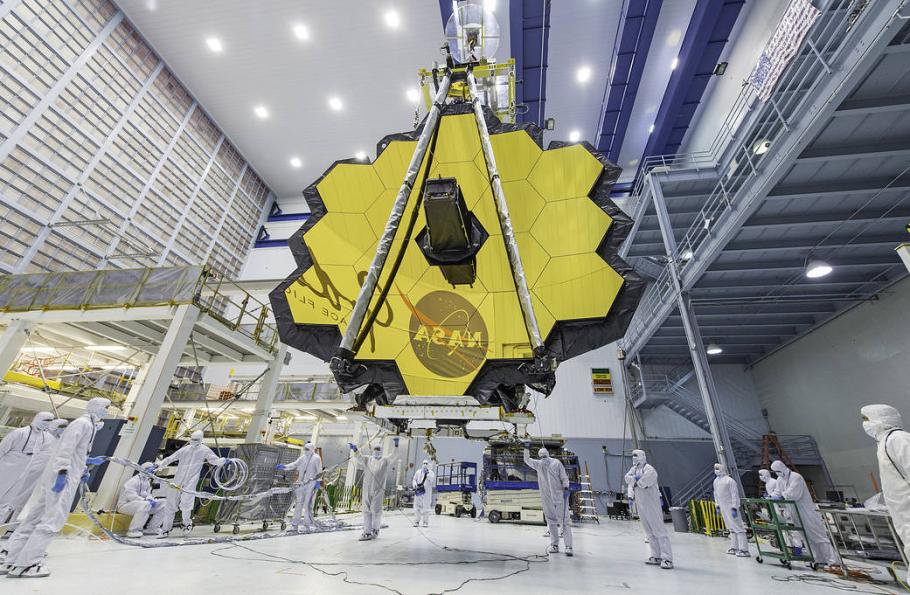When the Hubble Space Telescope was launched into orbit in 1990, one of the first things future Nobel winner and NASA astrophysicist John C. Mather learned wasn’t what Hubble could see—it was what Hubble couldn’t.
“One of the first discoveries we had with the telescope was ‘sorry, we can’t see that,’” Mather said. Mather had been one of the principal instrument scientists for the Cosmic Background Explorer (COBE) space telescope that revealed the earliest glimpses of our universe, just a few hundreds of thousands of years after the Big Bang. He and his colleague George Smoot received the Nobel Prize for their work on COBE in 2006. But COBE did not have the resolution to discern the earliest stars and galaxies, and neither did Hubble.
So, five years after Hubble's launch, Mather and his team at NASA’s Goddard Space Flight Center began work on the James Webb Space Telescope, an infrared telescope set to launch in 2019 that will see beyond what Hubble can show us: the first stars, galaxies, and black holes; comets, asteroids, and satellites; and more throughout our solar system and beyond.
The telescope’s two-decade-long development process speaks to Webb’s complexity. Mather and the project team he manages had to invent 10 new technologies to make the new telescope work, then test their designs and build an observatory.
“Golly gee, that’s not easy!” Mather noted with a laugh.
The deployed primary mirror of the James Webb Space Telescope at NASA's Goddard Space Flight Center.
The biggest challenge was the large, ultra-lightweight mirrors that form the heart of the telescope. Measuring in at 6.5 meters (21 feet) in diameter, the mirror array is comprised of 18 hexagons made of beryllium. The mirrors had to be very thin and very lightweight. When the team first started on Webb, no one had figured out how to make that happen. Now, it will be a key to the project’s success.
“We’re looking for very faint things that are very far away and really small,” Mather said. “A bigger telescope gives you more light and a sharper image.”
While the Webb team has already chosen almost half a year’s worth of observations to begin their research—among them is observing the atmospheres of exoplanets—Mather’s most excited about the unknown discoveries to come: “The telescope is more powerful than anything that we’ve ever had, so I’m eager to see the surprises. I feel pretty sure that we’re going to see something that nobody even dreamed was there.”
Nobel Prize winner John Mather, senior astrophysicist at NASA’s Goddard Space Flight Center and project manager for the James Webb Space Telescope, will be giving a lecture at the National Air and Space Museum in Washington, DC, on February 7 at 8 p.m. Tickets for “Engineering Miracles for Scientific Discoveries with the James Webb Space Telescope” are free, but are now in overflow seating. This event is part of the ongoing Exploring Space lecture series. Request tickets or learn how you can stream the lecture online.
We rely on the generous support of donors, sponsors, members, and other benefactors to share the history and impact of aviation and spaceflight, educate the public, and inspire future generations. With your help, we can continue to preserve and safeguard the world’s most comprehensive collection of artifacts representing the great achievements of flight and space exploration.
